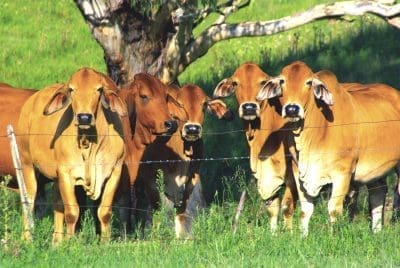WITH weaning occurring across Queensland, beef producers in ticky country are being encouraged to vaccinate their cattle for tick fever.
Last year saw tick fever incidence under-reported in many areas, Beef Central was told this morning.

Grazing Australian beef cattle
“For whatever reason, some producers don’t seem to be vaccinating like they used to,” a veteran Central Queensland animal health contact said.
‘Once Bos Indicus were adopted, there was generally less tick about, reducing the background population, and therefore the risk,” he said.
“But with some beef producers in ticky country now breeding towards less adapted British breeds and Wagyu types in response to meat quality market signals, more naïve and susceptible cattle may be present than a few years ago.”
Department of Agriculture beef extension officer Lara Landsberg said tick fever, caused by three blood parasites, was responsible for many preventable cattle losses each year.
“Losses occur when cattle are moved from tick-free to ticky country, and in unvaccinated cattle in the ticky country,” Ms Landsberg said.
The parasites infect and destroy red blood cells, resulting in significant mortalities and health problems – including weight loss, reduced bull fertility, lactation issues and pregnancy complications, she said.
Young cattle three to nine months of age have an age-related resistance to the tick fever disease. Therefore, weaning is the ideal time to vaccinate cattle – not only from the animal’s position, but also from a management perspective as they’re already being handled in the yards. Vaccination reactions are also much less likely in young animals.
Ms Landsberg said it took 60 days for vaccinated cattle to develop immunity to Anaplasma marginale, and 28 days to develop immunity to Babesia bovis and Babesia bigemina.
Because of the time required to develop immunity, cattle from tick-free areas should be vaccinated 60 days before being moved, she said.
“A common practice is to vaccinate weaners the day they are being turned out from the yards. Ideally cattle are not handled and transported during the potential reaction period.”
The potential vaccine reaction periods are:
- Babesia bovis: 5 to 14 days
- Babesia bigemina: 8 to 21 days
- Anaplasma marginale: 30 to 60 days.
“Normally a single dose provides lifetime immunity, but vaccination with two doses may be advisable when moving valuable naïve cattle like bulls to ticky country,” Ms Landsberg said.
For information on ticks or tick management, go to the TickBoss website or contact your local beef extension officer.
Source: DAF

HAVE YOUR SAY